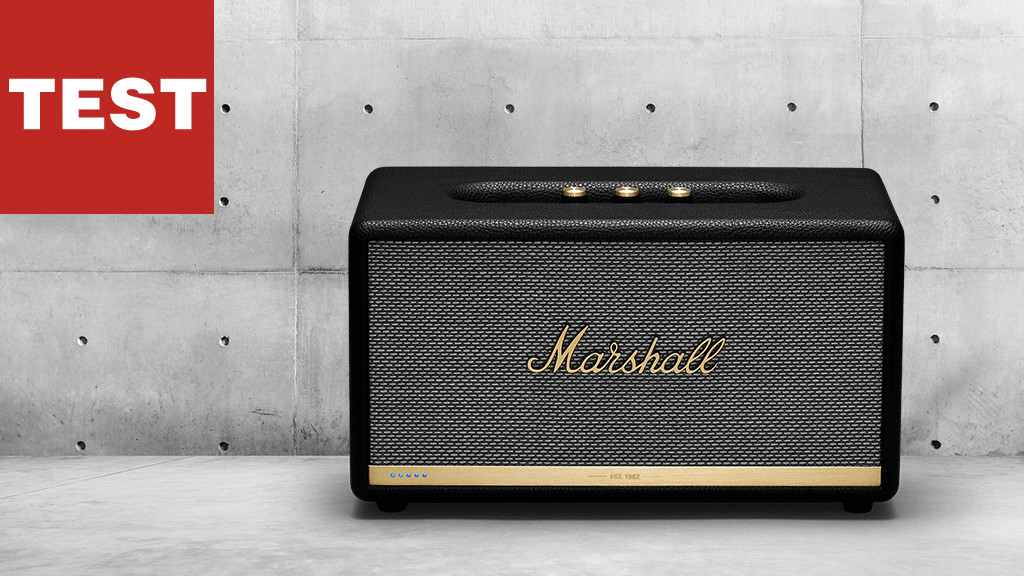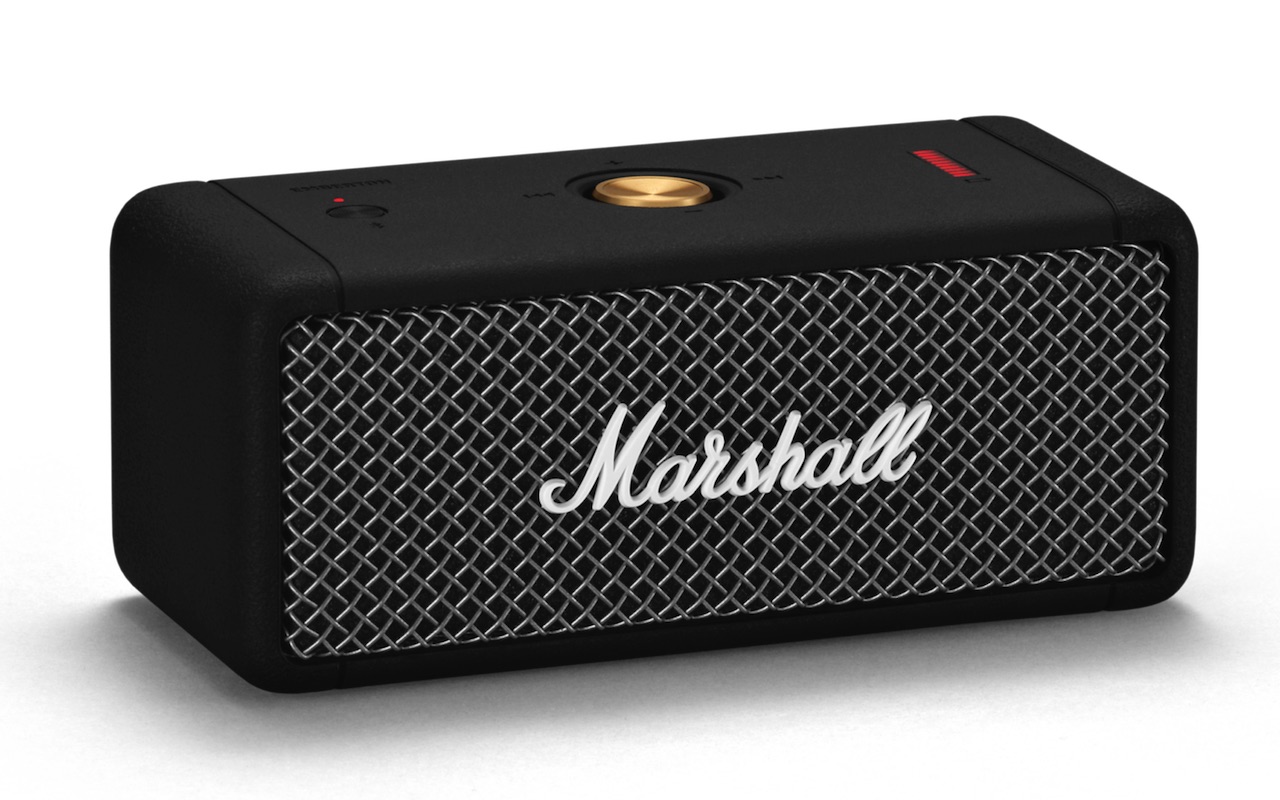Table of Content
That said, high-end is slightly lacking, contrary to the Big Four company’s promise. The bass response, moderately affected by a lack of low-end extension and a few resonances, remains fairly good overall. Despite the presence of two tweeters and two woofers, the sound field could be wider. Finally, since the speaker is a front-firing device, the directivity is quite poor. In terms of design, the Stanmore II Voice looks fantastic, with an upmarket and sophisticated color palette and rock-inspired hardware. Granted, it’s not cheap at nearly $400, but the speaker feels and looks expensive, and we can see it being a wonderful addition to the home, particularly for parties or super-hip listening sessions.

Room acoustics, particularly room dimensions and speaker positioning, will have a pretty big impact on sound quality performance. A passive radiator is a type of driver that doesn't have a voice coil and a magnet. The sound vibrations produced by a passive radiator depend on its mass and the size of its enclosure. It is usually used in combination with a woofer to produce deep bass tones. Devices with stereo speakers deliver sound from independent channels on both left and right sides, creating a richer sound and a better experience.
Google Home Mini vs Marshall Stanmore
Attack in midrange frequencies is precise, bass precision is globally very satisfying, and punch at loud volumes is very good. Additionally, the overall dynamics performance is particularly impressive at soft and even quiet levels with sharp attack, precise bass, and good punch. Finally, the Smart Sound technology appears to be fairly efficient, adapting the device’s performance appropriately to its acoustic environment. For example, in our bathroom use case, the overall timbre performance remains highly consistent, despite the room’s strong reverberation.
Callahan's baritone vocals sound rich and full, and receive enough treble edge to keep things defined. The acoustic guitar strums and higher register percussive hits also benefit from the crisp highs—and can get much brighter with the treble knob in effect. I hope this post was helpful for you to learn more about the speakers you had in your mind. I'd recommend you to base your decision primarily on the living space you'll place these speakers.
Marshall Stanmore II Voice Specs
Spectral artifacts, on the other hand, can appear at quiet, nominal, and maximum listening levels . For example, bass resonances and distortions can manifest on tracks exhibiting powerful low-end frequencies, such as in Electronic music, regardless of the volume. With a volume sub-score of 132, the Google Home Max comes very close to our top-ranking speaker in this category. It performed remarkably well in every use case we put it through, from bedtime to partying, to relaxing at home, friendly gatherings, in the kitchen, the bathroom, and even outdoors. But there’s still room for improvement, especially in the high-ends, where instruments such as hi-hat cymbals lack precision, and at soft volumes , where punch is slightly lacking. The Home Max’s sub-score of 124 indicates very good behavior in the dynamics area.

Notice the horizontal beige stripe at the bottom of this MarshallWoburn II. Base models of both Woburn and Stanmore speakers lack this stripe - which you can use to distinguish them from one another. The extra woofer in Marshall Woburn II will help it product more satisfying sounds compared to Stanmore II. You can see also this being reflected to the technical specs in the lower frequency department. The higher the high-frequency response, the clearer and crispier the treble. Dolby Atmos is a surround sound technology that allows sounds to be interpreted as three-dimensional objects. If you have a second speaker of the same type, you can pair them together to create a stereo sound setup. It also owes its good ranking to its great volume step consistency and its excellent maximum volume.
Similar Products
In this case, the Googe Home app is your ticket to getting the most out of it. It's also necessary to download for the initial setup of the speaker. However, once setup and connected to your Wi-Fi network, you can more or less get by without the app if you'd like. Around back, the speaker has a stereo RCA input and a connection for the included power cable.

From an SQ perspective Sonos Move, its essentially a perfect speaker, as one person put it, its like having the band in the room with you. This technology allows the users to use their smartphone as a remote control for the device. We consider a lower weight better because lighter devices are more comfortable to carry. A lower weight is also an advantage for home appliances, as it makes transportation easier, and for many other types of products. Volume is the quantity of three-dimensional space enclosed by the product's chassis or, in simpler terms, the space the product occupies. There is a control panel on the device body, so you can easily access the volume control or remote without having to interact with a cable or another device it's connected to.
The levels are displayed in red underlit LEDs that surround each knob. To the right of this, there's a play/pause button, but there are no track navigation controls. These 60's rock and roll hipster speakers are made to be an elegant and functional piece of your authentically furnished home, boutique store, or a music studio. Whereas the woofers are the larger amplifiers, placed at the bottom of speakers, under the tweeters. In Marshall's line-up, Woburn II and Stanmore II are the first and second largest bluetooth speakers. Woburn II is more like a livingroom speaker whereas the Stanmore II is more like a shelf speaker.

Embedded Smart Sound technology allows the speaker to adapt to complex acoustics. The speaker’s overall dynamics remain particularly precise and impactful at soft and even quiet volumes. Our dynamics tests measure how well a device reproduces the energy level of a sound source, taking into account attack, bass precision, and punch. At nominal volume, the frequency ranges are well balanced, with particularly consistent midrange frequencies .
Thanks to acoustic noise cancellation, the Stanmore II Voice can hear you from across the room, without being distracted by any music already playing through the speaker. It’s not just about dials however - there are buttons that allow you to control the input source , play/pause your music, and a microphone button if you want to speak to Alexa. Alternatively, you can simply say “Alexa” to activate the voice assistant.
This is why you'll hear a bunch of completely different experiences with the same speaker. The impact of the combination of these two is actually so strong that in most cases, it doesn't even make sense to utter a single word on sound quality without speaking of them. So, in reality, assuming everything else is equal, a 110 dB speaker will almost be twice as loud as a 101 dB speaker. In their product manuals (Manual of Stanmore II - Manual of Woburn II ), you can see that the maximum sound pressure level of Stanmore II stands at 101 dB.
All in all, if you’re looking for a great party speaker with the ability to control your smart home, the Stanmore II Voice could be your new best friend. The main calling card of this speaker is its Alexa integration, and we found this aspect worked very well, thanks partly to the far field microphone that picks up your voice wherever you are in the room. The rose-gold accents really lend the design of this speaker a sense of sophistication, and are carried through the bottom panel, Marshall logo, and the controls on the top of the casing. The Stanmore II Voice is around $50 more expensive than the non-Alexa Bluetooth version, and sits around the mid-range for Marshall speakers generally. Higher rating than its predecessor, and to make it a standout in the smart speaker realm. On the high end, we're also fans of the Google Home Max and the Apple HomePod.

No comments:
Post a Comment